Original URL: https://www.theregister.com/2009/02/27/review_laptop_12in_toshiba_portege_r600/
Toshiba Portégé R600
Netbook-beating portability
Posted in Personal Tech, 27th February 2009 09:05 GMT
Review People like netbooks for two key reasons: price and portability. Even the not-so-cheap models deliver a decent daily use performance in a form that's the peak of pick-up-and-go computing.
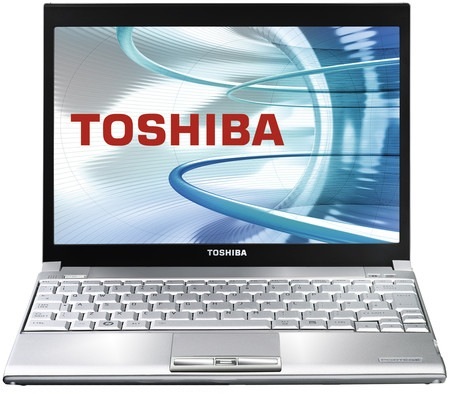
Toshiba's Portégé R600: lighter than a netbook
Well, they're not at the peak any longer. Toshiba unveiled the Portégé R600 last autumn as the Centrino 2 upgrade to the R500, which we took a look at in February 2008. The R500 weighed barely less than an Asus Eee PC 701 - the R600 we have here is even lighter still.
And bear in mind this is is the original 7in Eee we're talking about, not one of its larger, more recent siblings. We kid you not: the 800g R600 feels as if there's nothing inside the case.
What it actually has is an aluminium-alloy chassis into which is slotted a 1.4GHz Intel Core 2 Duo SU9400 processor which sits on an 800MHz frontside bus, linking it up to 3GB of DDR 2 memory. Storage comes courtesy of a netbook-style SSD but with a hard drive-level 128GB capacity. The screen is a netbook-beating 12.1in, 1280 x 800, LED-backlit panel driven by Intel's latest integrated graphics core, the GMA 4500MHD, part of the GS45 chipset.
True to its go-anywhere ambitions, the R600 incorporates 802.11n Wi-Fi and a network-unlocked 7.2Mb/s HSDPA 3G module. It also has Bluetooth.
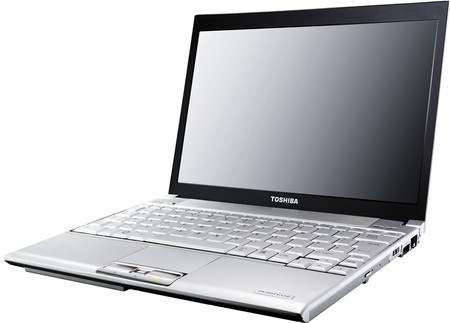
Less weight than a netbook, but a bigger spec
Taking a trip around the plastic casing we have, from the back to the front, power, VGA, combo USB 2.0/eSATA, vanilla USB and 3.5mm audio ports and a volume wheel on the left side. The right side is home to a Gigabit Ethernet socket, a third USB port, a switch for the wireless sub-system, an ExpressCard 54 bay and an SDHC card slot.
Keen readers will have already noted the absence of an optical drive from the list. Toshiba sent us the R600-108 variant, which lacks this component, the better to keep the weight down. We'll take a gander at the other models when we discuss pricing at the end of the review, but for now it's enough to say other laptops in the R600 series do include slimline multi-format DVD writers.

Less than 2cm thick
Like the R500 before it, the R600 is painted matte silver, which gives it a tacky look relieved only by the black screen surround. It's not beige, at least, but the R600's physical design is good and deserves a better colour scheme than the one Toshiba's selected for it.
Likewise, Toshiba doesn't appear to have done anything to address one of our key criticisms of the R500: the bendy lid. It's the same problem you get with Sony's slimline Vaio TT: reducing the thickness of the lid to four or five millimetres is all well and good, but you can't ignore its lack of rigidity.
Now, Toshiba maintains this bendiness is a good thing: it allows the screen to bend during an impact rather than break. There's probably some truth in that, but how far a laptop has to fall before the screen flex no longer makes a difference is unclear. The flex may make it more resistant to knocks and bumps, bit we don't think the display on an open R600 knocked off a desk onto a hardwood floor is going to survive.
The lightness of the laptop means you can open the screen with just a push - you need to hold down the front of the machine too, or the whole think pivots at the back and lifts up. Once open past 30° the screen can be tilted with a finger without moving the laptop.
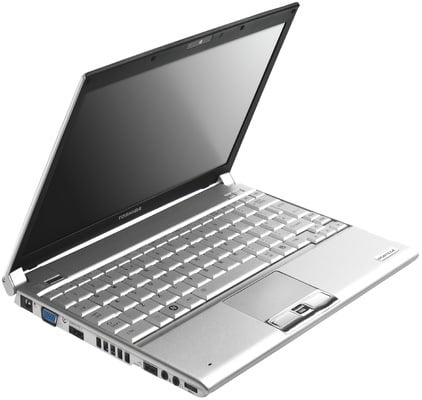
How useful is a thin, bendy screen?
Open, the R600's keyboard is revealed as the same full-size array as before and like you'll find on most laptops. The keyboard lacks rigidity, but it seems more solidly underpinned than the one on the R500 - it's certainly fine to use. There's the same trackpad, with a fingerprint sensor between the chrome-look buttons and array of status LEDs below them.
Again, Toshiba has placed the on-board microphone about an inch into the left wrist-rest area - exactly where you place your sound-muffling palm when working.
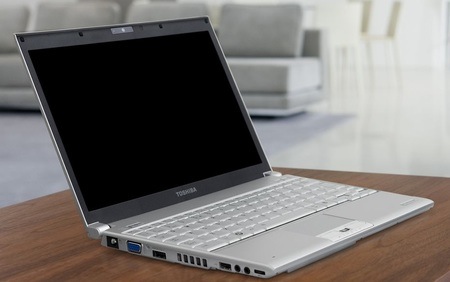
Nice design, shame about the colour scheme
Underneath the R600, you'll find the docking port and a memory hatch that, when unscrewed, reveals the machine's single Dimm slot. The R600 has a gig soldered onto the motherboard, with the remaining 2GB on the Dimm. You can take it out and put a 4GB unit in its place, but no more.
The SIM slot is hidden by the 2900mAh battery, which makes up almost the entirety of the back end of the R600.
And here's a key disappointment: running our usual laptop battery life test - PCMark05 looped until the machine shuts down - we got a mere 80 minutes' runtime out of the R600. This is an extreme test, chosen because it provides a consistent measure of battery capacity across different machines, and in real-life usage we'd expect to get at least double that amount.
Battery Life Results
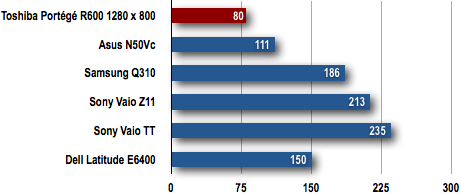
Battery life in minutes
Longer bars are better
But two hours and 40 minutes isn't exactly stunning. It's no more than many a netbook - less that quite a few of them, too.
Taking a look at PCMark05's numbers, the R600 wasn't a performance leader, but it wasn't bad either. It just beat Sony' Vaio TT, it's nearest rival, and was a nose ahead of Lenovo's old ThinkPad X300, though that's using the latter's pre-Centrino 2 numbers.
PCMark05 Results
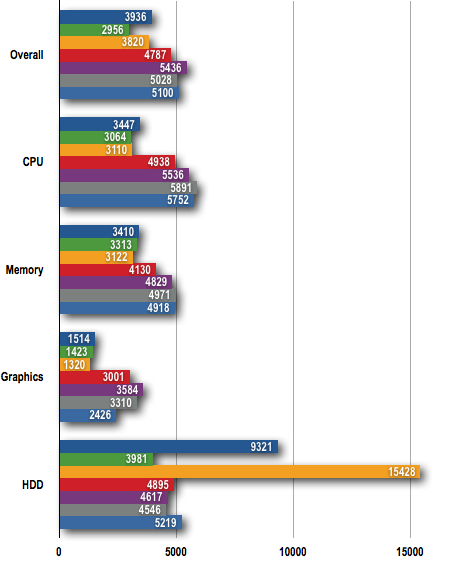
Longer bars are better
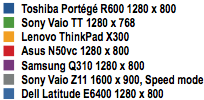
But the year-old X300's SSD has the R600's Flash drive licked - just as the Toshiba machine's solid-state drive came well ahead of hard drive-based laptops we've tested.
We also ran 3DMark06, which confirmed PCMark05's graphics test: if it's speedy 3D imagery you want, the R600 isn't for you.
3DMark06 Results
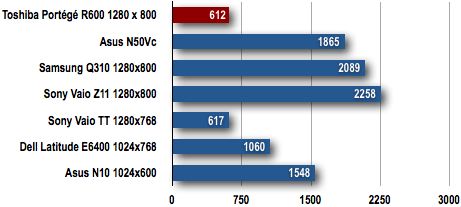
Longer bars are better
We've mentioned the R600-108's disappointing battery life, and we should here add the screen to the list of weaknesses too. Our battery life test is run with the screen set to maximum brightness, but even then we found the R600's "high brightness" screen rather dim. The display's viewing angle is narrower than most. During 3DMark06's game-style image rendering, the backlight appeared to be illuminating the screen very unevenly, but we think that's more a factor of the display's limited viewing angle than the backight per se. With no bright days this time of year, we couldn't test the screen's outdoor visibility, but it didn't impress us indoors.
That's likely to affect all the machines in the R600 range, but at least other models have optical drives as some compensation. They have better battery lives too. Toshiba quotes four 4h 35m for the R600, but 8h 25m for the R600-101, R600-11Q and R600-10Q, and 9h 30m for the R600-102, which, despite its lower model number, offers the same or better features than the R600-108.
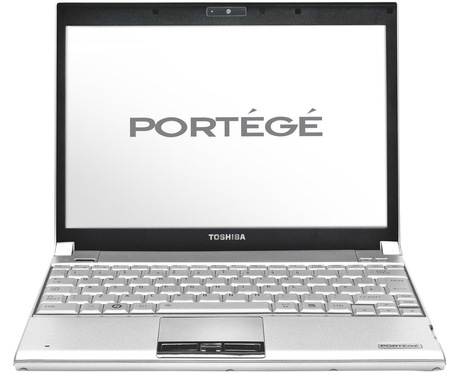
Not a great display
The machine we tested costs a whopping £1839 inc VAT, but only £115 more will buy you the 102 with its bigger battery and optical drive. The 101 costs £1379, for which you also get an optical drive and a longer battery life, but a 200GB HDD instead of the 128GB SSD. The 10Q is £1264, but the saving comes at the cost of 40GB of hard drive capacity and the removal of the HSDPA card.
Balancing features, battery life, price and portability, we'd pick the R600-101 over the R600-108 any day. More storage space, more untethered runtime, more weight (1114g to 800g), lower price - there's no contest.
Mind you, even a pay-extra-for-the-looks netbook, like the Eee PC S101 is still a third of the price. While the S101's PCMark05 scores are lower than the R600's, for the kind of workloads both are likely to be put to, the Asus isn't going to feel particularly underpowered.
Verdict
The R600 is proof, if proof were needed, that laptops are like cars. They'll all get you from A to B, but folk will still buy expensive ones, cheap ones, sexy ones, butt-ugly ones - whatever your preference, there's a model for you. If you're after a compact laptop that delivers better performance than a netbook and equivalent portability, and you can afford the price tag, the R600 is worth a look. But for us, the Sony TT beats it, thanks to a better screen. ®
More Notebook Reviews...

Sony Vaio TT |

Samsung Q310 |

Asus N10 |

Sony Vaio Z11 |